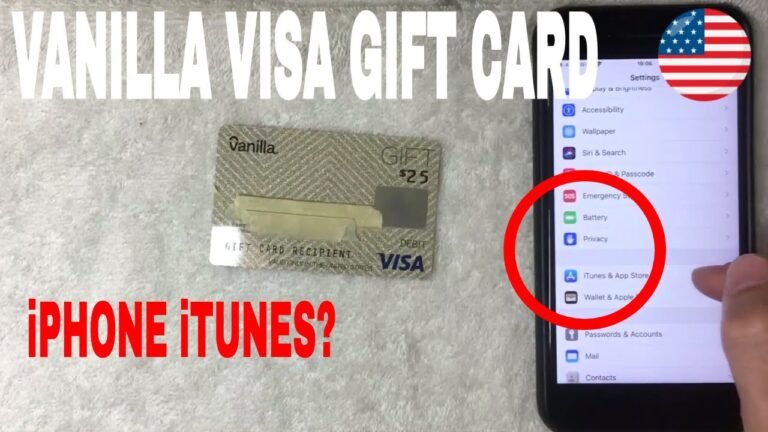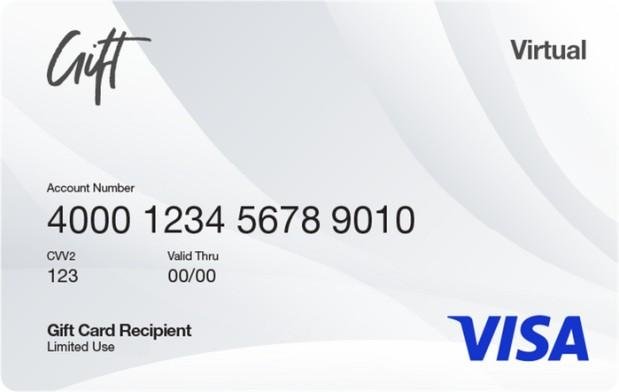Comment obtenir une carte verte avec un visa F1 : guide étape par étape
Are you currently studying in the United States on an F1 visa and dreaming of obtaining a Green Card? You’re not alone.
Many international students share this goal, and the process can seem overwhelming. But it doesn’t have to be. Understanding the steps you need to take can make a significant difference. You’ll discover practical strategies and tips to transition from your F1 visa to a Green Card.
We’ll break down the process into simple, manageable parts, so you can feel confident every step of the way. Whether you want to stay in the U. S. For work, family, or other reasons, the path to a Green Card is within your reach. Let’s dive into the essential information you need to turn your dreams into reality.
Understanding The F1 Visa
F1 Visa holders can transition to a Green Card through various pathways. These include employment sponsorship and family connections. Understanding the steps involved is crucial for a successful change in status.
Understanding the F1 Visa The F1 visa is your gateway to studying in the United States. It allows international students to enroll in academic programs at U.S. colleges and universities. But there’s more to it than just studying; the F1 visa can also open doors for your future in America.What Is The F1 Visa?
The F1 visa is specifically designed for students attending an accredited institution in the U.S. It gives you the chance to focus on your studies while living in the country. This visa is valid for the duration of your academic program, plus any authorized practical training period. You can stay in the U.S. for up to 60 days after completing your studies.Conditions d'éligibilité
To qualify for the F1 visa, you must meet several criteria:- Be accepted by a Student and Exchange Visitor Program (SEVP) approved school.
- Show proof of sufficient financial resources to cover your tuition and living expenses.
- Prove your intent to return to your home country after your studies.
Maintaining F1 Status
Once you have your F1 visa, maintaining your status is essential. You must:- Enroll full-time in your program.
- Keep your school informed about any changes in your address or academic status.
- Abide by the rules regarding employment, as working without authorization can jeopardize your visa.
Work Options For F1 Visa Holders
The F1 visa does allow for limited work opportunities. You can work on-campus up to 20 hours per week during the school year and full-time during breaks. After completing your degree, you can apply for Optional Practical Training (OPT). This lets you work in your field of study for up to 12 months, giving you valuable experience. Have you thought about how this work experience could enhance your resume? Navigating the F1 visa can feel overwhelming at times, but understanding its intricacies is crucial. Each step you take builds a foundation for your future in the U.S. Keep your goals in sight, and stay informed about your options. Your journey is just beginning.
Credit: www.immigrationvisaus.com
Pathways To A Green Card
Getting a Green Card from an F1 visa is possible through different pathways. Students often transition to work visas or family-sponsored options. Understanding the steps and requirements is key to making this process smoother.
Getting a Green Card from an F1 visa can feel like a daunting task. However, several pathways can lead you toward permanent residency in the United States. Understanding these options is key to making informed decisions about your future. Let’s dive into the various pathways you can explore.Employment-based Options
One of the most common ways to transition from an F1 visa to a Green Card is through employment. If you find a job in your field after graduation, your employer can sponsor you for a Green Card. This usually involves applying for an H-1B visa first, which allows you to work in a specialty occupation. Once you have the H-1B, your employer can start the Green Card process, often using the EB-2 or EB-3 categories based on your qualifications. You may need to demonstrate that there are no qualified U.S. workers for your position, which can take time.Family Sponsorship
Family ties can also pave the way to permanent residency. If you have immediate relatives who are U.S. citizens or Green Card holders, they can sponsor you. Immediate relatives include parents, spouses, and children. This process typically has fewer barriers and shorter wait times compared to other sponsorship options. However, if you have extended family members, like siblings, the wait can be significantly longer. Have you thought about who in your family might be able to help?Investment Opportunities
Investing in the U.S. can open doors for Green Card eligibility. The EB-5 Immigrant Investor Program allows you to obtain a Green Card by investing at least $900,000 in a targeted employment area or $1.8 million in other locations. This investment must create at least 10 full-time jobs for U.S. workers. It’s a substantial financial commitment, but for those who can manage it, it offers a direct path to residency. Have you considered the types of businesses you’d want to invest in?Seeking Asylum Or Refugee Status
If you fear persecution in your home country, seeking asylum might be an option. You must apply for asylum within one year of your arrival in the U.S. If granted, you can apply for a Green Card after one year of being an asylee. This route is more complex and requires substantial proof of your circumstances, but it can provide a safe haven and a pathway to permanent residency. Have you looked into the requirements and challenges of this path?Diversity Visa Lottery
The Diversity Visa Lottery is another unique opportunity. This program is designed for individuals from countries with low immigration rates to the U.S. Each year, the lottery grants 50,000 Green Cards. While it’s a random selection process, applying is straightforward and free. Make sure to check your eligibility, as not all countries qualify. Could luck be on your side? Navigating these pathways requires careful planning and awareness of your options. Take time to consider which route aligns with your personal circumstances and long-term goals. Your journey to a Green Card can start today.Transitioning From F1 Visa To Opt
Transitioning from an F1 visa to Optional Practical Training (OPT) is an important step for international students. This program allows you to work in your field of study. Gaining work experience can help you apply for a green card later on.
Eligibility And Application Process
To qualify for OPT, you must meet certain criteria. You need to have been enrolled in a degree program for at least one academic year on your F1 Visa. The application process involves submitting Form I-765 to USCIS along with supporting documents, such as your Form I-20 and proof of your enrollment. Timing is essential. You can apply for OPT up to 90 days before your program end date and up to 60 days after. Make sure to check the USCIS website for the latest updates and processing times.Duration And Restrictions
OPT allows you to work for up to 12 months after graduation. If you are in a STEM field, you can extend this period by an additional 24 months, giving you a total of 36 months to gain experience. While on OPT, you must work in a position related to your field of study. Remember, maintaining your F1 status is crucial. You cannot be unemployed for more than 90 days during your OPT period.Benefits Of Opt For Green Card Transition
OPT provides invaluable work experience that can enhance your resume. Employers often prefer candidates with practical experience, making you a more attractive applicant for future job opportunities. Additionally, working in the U.S. can help you build a professional network. This network can be instrumental in finding employers willing to sponsor you for a Green Card. Have you considered how your OPT experience could shape your career path? It’s a pivotal time to learn, grow, and position yourself for success in the competitive job market. Taking full advantage of your OPT can significantly ease your transition to permanent residency. Seize the moment—your future in the U.S. depends on it.
Credit: m.youtube.com
Securing Employer Sponsorship
Securing employer sponsorship is essential for F1 visa holders. This process allows students to transition from a student visa to a green card. It involves finding a job and getting support from an employer. This support helps you navigate the immigration system.
Finding Eligible Employers
Start by searching for companies that sponsor visas. Many large companies have programs for international students. Look for job postings that mention H1B sponsorship. Use job search websites to filter your options.
Networking is also key. Connect with professionals in your field. Attend job fairs and industry events. Use platforms like LinkedIn to reach out to recruiters.
Research companies that have a history of sponsoring F1 students. This information can often be found online. Knowing which employers are willing to sponsor helps narrow your search.
H1b Visa As A Stepping Stone
The H1B visa is often the next step after your F1 visa. It allows you to work in the U.S. for up to six years. Many employers prefer hiring candidates with this visa. This makes you a more attractive candidate.
Once you have an H1B visa, you can start the green card process. Your employer can help you with this. They will file the necessary paperwork on your behalf.
The H1B visa also provides stability. It gives you time to gain experience. This experience can strengthen your green card application.
Perm Labor Certification Process
The PERM Labor Certification is a key step in obtaining a green card. This process ensures that no qualified U.S. workers are available for your job. Your employer must prove this to the Department of Labor.
During this process, your employer will advertise the job. They must document their efforts to find U.S. workers. This includes posting on job boards and newspapers.
Once the labor certification is approved, the next steps begin. Your employer can then file an immigrant petition. This petition is crucial for your green card application.
Understanding the PERM process can simplify your path to a green card. Work closely with your employer during this stage. Clear communication will help ensure a smooth process.
Marriage To A U.s. Citizen
Marrying a U. S. citizen can lead to a green card for those on an F1 visa. The process involves filing specific forms and attending an interview. Understanding the steps helps ensure a smoother transition from student status to permanent residency.
Marriage to a U.S. citizen can be a pathway to obtaining a Green Card from an F1 visa. This option is often pursued by international students who find love during their studies in the U.S. It’s important to understand the legal requirements, documentation needed, and the overall process to navigate this journey smoothly.Legal Requirements And Documentation
To get a Green Card through marriage, you must meet specific legal requirements. First, your marriage must be legally recognized. This means you need to obtain a marriage certificate from the state where you were married. You must also prove that your marriage is genuine. This may include: – Joint bank account statements – Lease agreements with both names – Photos from your wedding and events together Documentation is crucial. Gather all necessary forms, including: – Form I-130 (Petition for Alien Relative) – Form I-485 (Application to Register Permanent Residence or Adjust Status) – Proof of your spouse’s citizenship (like a birth certificate or passport) Ensure that all documents are accurate and complete to avoid delays.Process Timeline
The timeline for obtaining a Green Card through marriage can vary. Typically, the entire process takes between 10 months to over a year. Here’s a rough breakdown: 1. Filing the Petition: After gathering documents, your spouse files Form I-130. Processing can take anywhere from 5 to 12 months. 2. Adjustment of Status: Once approved, you can file Form I-485. This step usually takes an additional 8 to 14 months. 3. Décision finale: After your interview, you will receive a decision in about 2 to 4 weeks. Each case is unique, so your timeline may differ. Staying organized and checking the USCIS website for updates can help you stay on track.Interview Preparation
The interview is a critical part of the process. You’ll likely be interviewed together, and it’s important to prepare thoroughly. Consider these tips for a successful interview: – Practice common questions: Be ready to answer questions about your relationship, such as how you met and your daily life together. – Bring documentation: Carry copies of your forms and any supporting documents. This will show you are well-prepared. – Stay calm and honest: Answer truthfully and don’t overthink your responses. Authenticity goes a long way. Think about the questions you might face. How well do you know each other’s families or routines? Practicing these scenarios can make a significant difference in your confidence. Every step in this process holds importance. The right preparation can lead to a successful outcome, allowing you to build your life in the U.S. with your spouse.
Credit: www.ashoorilaw.com
Adjusting Status To Permanent Residency
Adjusting status from an F1 visa to permanent residency is a key step for many students. This process allows you to stay in the U.S. after your studies. It gives you a chance to work and live permanently in the country. Understanding the steps is essential for a smooth transition.
The process can seem complex. You must follow specific steps and meet certain requirements. It starts with filing the right forms and gathering necessary documents. A clear plan helps you avoid common pitfalls.
Form I-485 Application
The Form I-485 is essential for adjusting your status. This application allows you to request a change to permanent residency. Fill out the form carefully. Provide accurate information about your background and immigration status.
Once completed, submit your application to USCIS. Make sure to include the required fees. After submission, you will receive a receipt notice. This notice is your confirmation that USCIS has received your application.
Medical Examination Requirements
Bring your vaccination records to the appointment. The doctor will fill out Form I-693 after the exam. You need to submit this form with your I-485 application. This step is important for your application to be approved.
Supporting Documents Checklist
Gathering supporting documents is vital. These documents help prove your eligibility. A checklist can help you stay organized.
- Copy of your passport
- Copy of your I-94 form
- Proof of financial support
- Two passport-sized photos
- Form I-693 from your doctor
- Any previous immigration documents
Make sure all documents are up to date. Submit them with your Form I-485. This will strengthen your application.
“`Tips For A Smooth Transition
Getting a Green Card from an F1 visa can be tricky. Start by understanding the different paths available. Gather necessary documents and seek help from immigration experts to ease the process. Staying informed will make your transition smoother.
Transitioning from an F1 visa to a Green Card can feel overwhelming. However, with the right strategies, you can make this process smoother and more manageable. Here are some essential tips to help you navigate your journey effectively.Avoiding Common Mistakes
Many students fall into the trap of assuming their F1 status automatically converts to a Green Card. This misunderstanding can lead to missed opportunities. Be clear about your eligibility. Research the specific Green Card categories available to you, such as family sponsorship or employment-based options. Always double-check your application materials. A small error can delay your application or lead to a denial. Stay informed about deadlines. Missing a filing deadline can have serious consequences for your status.Maintaining Legal Status
Maintaining your legal status is crucial during your transition. Ensure you are enrolled in your program and making satisfactory academic progress. Consider your options if you face challenges. For instance, if your program ends, look into Optional Practical Training (OPT) or Curricular Practical Training (CPT) to stay compliant. Keep all your documents organized. This includes your I-20 form, visa, and any employment authorization documents. Having everything in one place can save you time and stress.Seeking Professional Guidance
Navigating immigration laws can be complex. Seeking professional guidance from an immigration attorney can provide clarity. An attorney can help you understand your options based on your unique situation. They can also assist with completing forms and preparing for interviews. Don’t hesitate to ask questions. Understanding each step of the process can empower you to make informed decisions. Have you ever faced a situation where professional advice made a significant difference? Your experiences could help others in similar situations. Implementing these tips can help you transition from an F1 visa to a Green Card with confidence and ease.Questions fréquemment posées
How Can F1 Visa Holders Apply For A Green Card?
F1 visa holders can apply for a Green Card through various pathways. Common options include family sponsorship, employment-based immigration, or the Diversity Visa Lottery. Each pathway has specific requirements and processes. It’s crucial to understand which option aligns best with your situation to ensure a smooth application process.
What Are The Requirements For F1 Visa Holders?
F1 visa holders must meet specific criteria to transition to a Green Card. Typically, they need to maintain their student status, meet educational qualifications, and have a valid job offer if applying through employment. Understanding these requirements is essential for a successful application and future residency.
Can F1 Visa Holders Change Their Status Easily?
Changing status from an F1 visa to a Green Card is possible but not necessarily easy. Applicants must navigate complex immigration laws and fulfill various requirements. It’s advisable to seek guidance from an immigration attorney to understand the best course of action tailored to individual circumstances.
Is A Job Offer Necessary For Green Card Application?
A job offer is often necessary for employment-based Green Card applications. However, options like family sponsorship do not require a job offer. Understanding the different pathways available can help F1 visa holders determine if they need a job offer for their specific situation.
Conclusion
Getting a Green Card from an F1 visa is a journey. It requires careful planning and a clear understanding of the process. Follow the steps outlined in this guide. Stay informed about visa options. Seek help from experts if needed.
Keep track of deadlines and required documents. Patience is key. Every step counts towards your goal. With determination, you can achieve permanent residency. Start your process today for a brighter future in the U. S.






